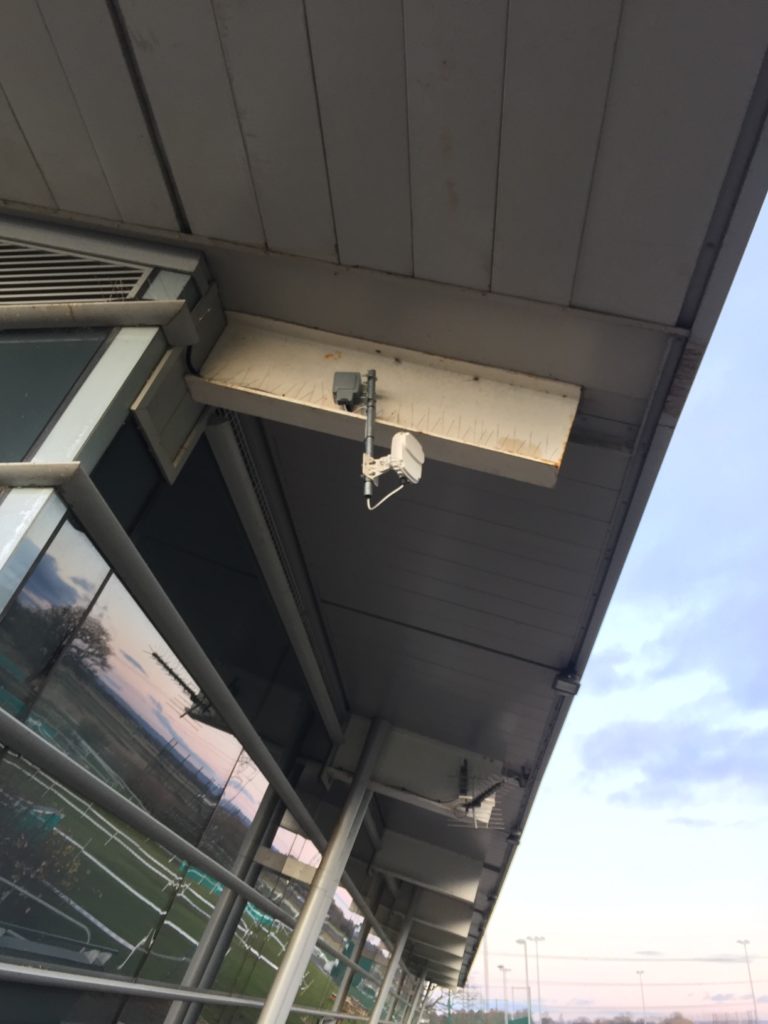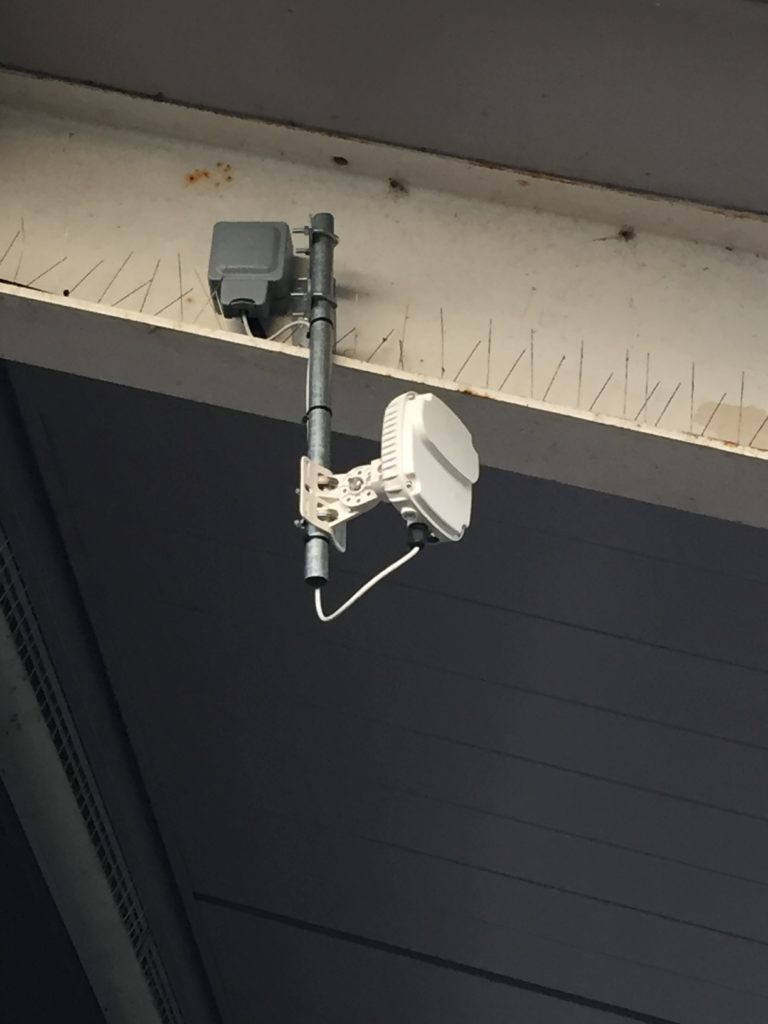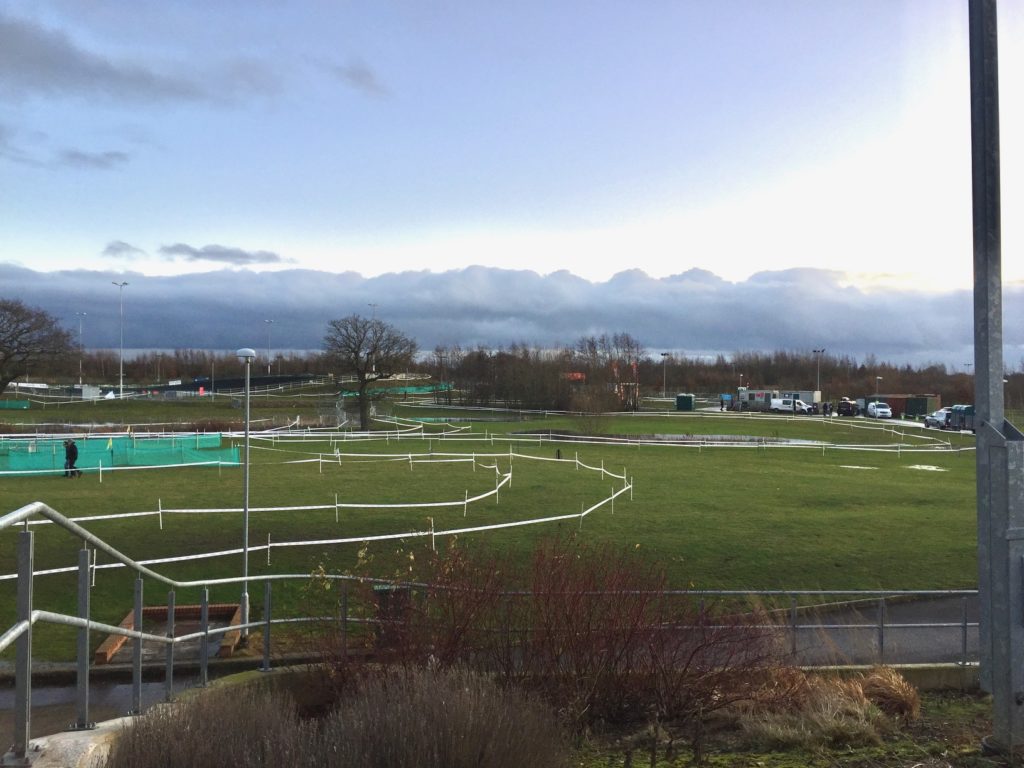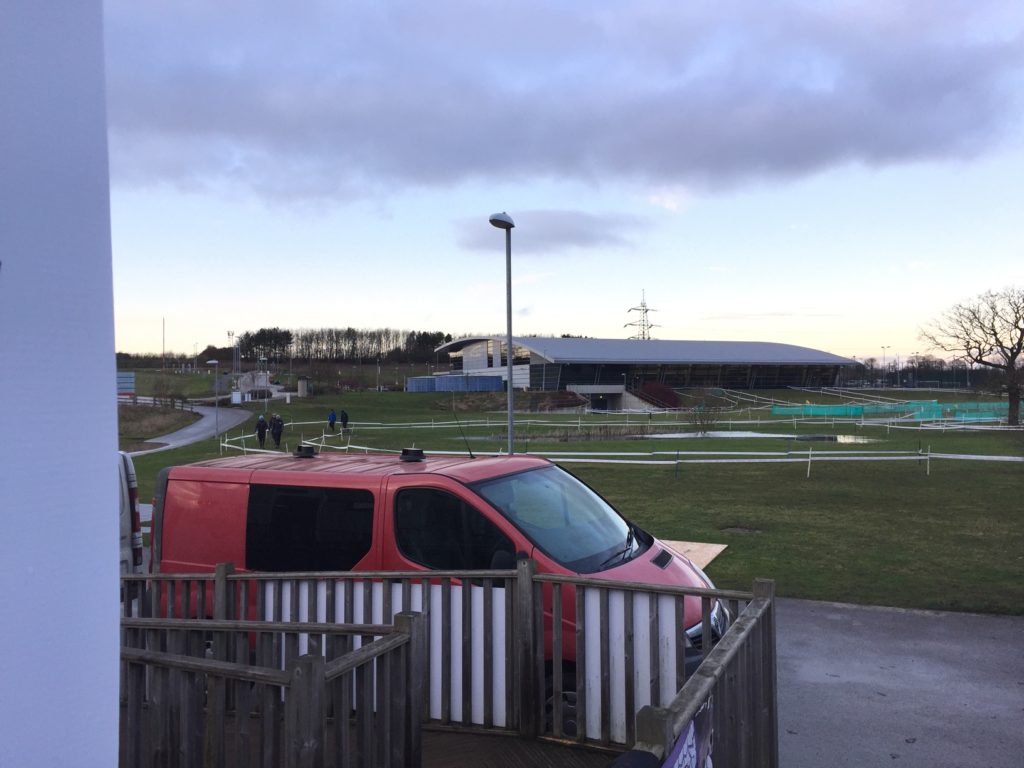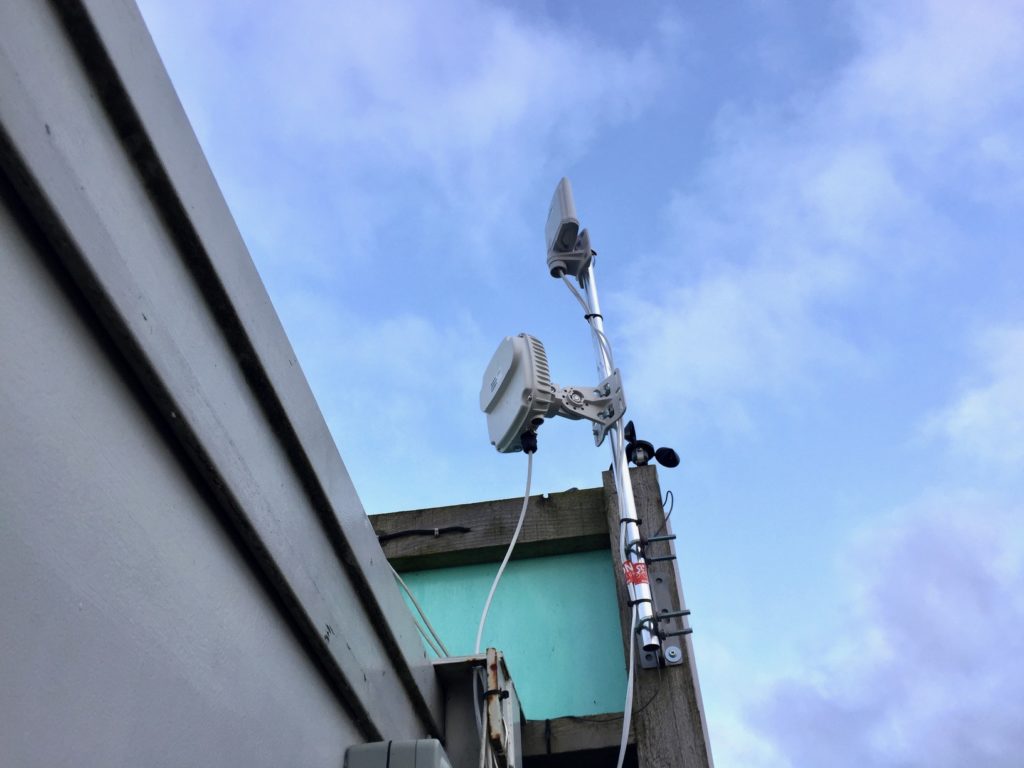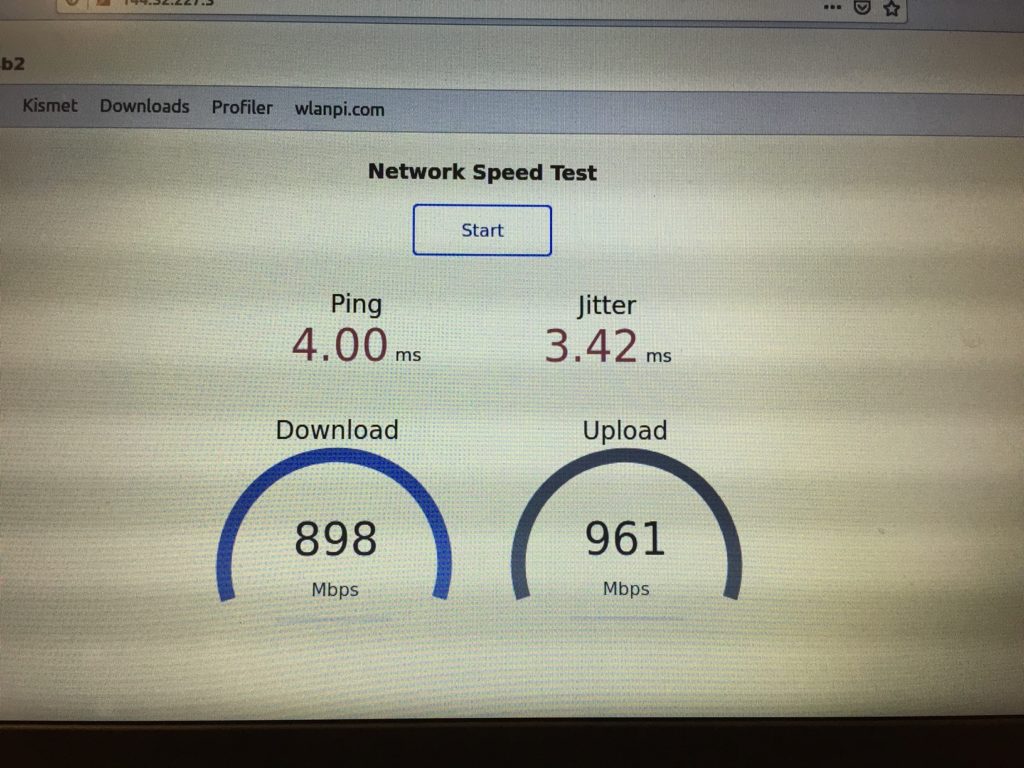The Aruba AP-387 was launched a little while ago now, I first saw it demonstrated at Aruba Atmosphere 2018 in Croatia. It’s an AP designed for point to point links with 802.11ac 5GHz and 802.11ad 60GHz radios. The aggregate RF throughput is in the region of 2.5Gbps which means it can maintain duplex gigabit wired speeds and testing has shown this to be reliable up to the specified 400 metres. Should conditions cause a deterioration of the 60GHz link, the 5GHz link will continue to provide connectivity, albeit with lower throughput.
Installation is relatively straight forward. The APs don’t need super accurate aiming as part of the 802.11ad spec includes electronic alignment of the antenna. This can also cope with wind motion, though the more stable and well aimed the units, the better.
This install was between a sports facility building and a remote cabin beside the cycle track. The cabin had been without connectivity since construction as, for reasons nobody can explain, no data ducting was installed alongside the power feed. Attempts to drag fibre through the power duct failed and costs for ducting and fibre installation were priced at around £25k.
The AP-387 is what Aruba refer to as a unified AP so a pair can be standalone and managed as Instant APs or they can work as part of an Aruba controller environment – as was the case here. The link uses Aruba’s mesh configuration with one mesh portal and one mesh point.
This link was configured to use UNII-3 Band C channels on the 5GHz radio as the institution had an Ofcom license for outdoor use. (note these channels are now available for license free use indoors only at low power as well as outdoor at high power with a license…. not that gets confusing at all.)
The initial setup on the bench was very straight forward. The installation was handed over to experienced cabling contractors with no specific wireless expertise or specialist equipment.
And it just worked.
The AP behaves as a bridge by default, passing all tagged vlans across the link. This network uses the same management vlan for APs and switches, so the only deviation from standard edge switch config at the remote end was to untag this management vlan on the uplink port.
The link length was approx 190 metres and I kept an eye on it during some quite mixed weather using a regular automated speed test. No performance drop was observed during heavy rain or fog.
This was a great result. The cost, including installation, was a little over 10% of the cabling price estimate.
Two points to note. The mounting brackets really require pole mounting as there is no horizontal adjustment available. Once in operation there’s very little information available about the state of the 60GHz link.
